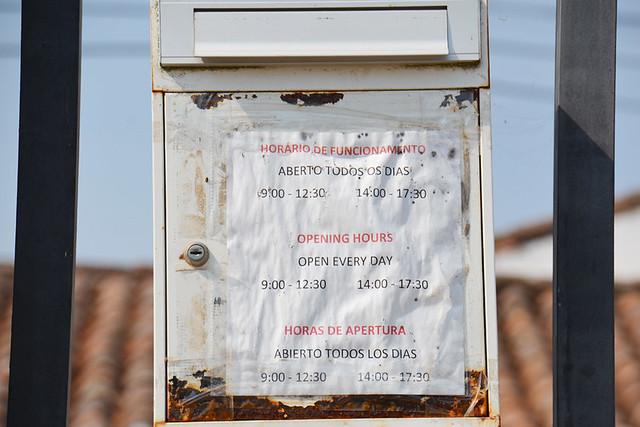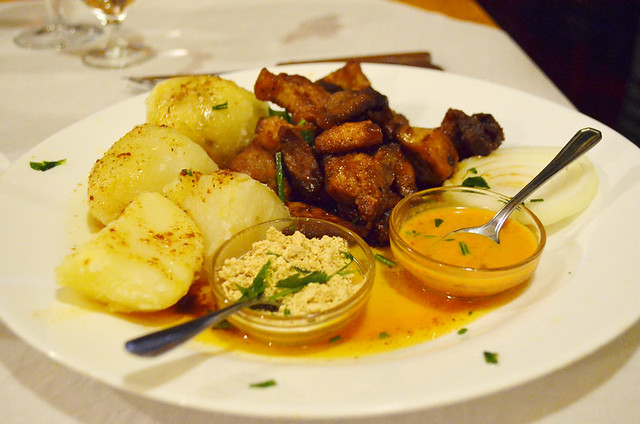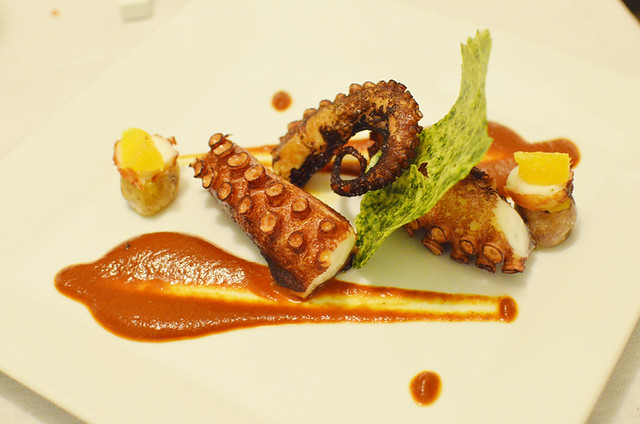Whatever anyone thinks about the travel advisory giant, Tripadvisor is the best place for finding information about restaurants in any given location.
However, there’s a right way to use it and lots of wrong ways.
Here’s how Tripadvisor restaurant reviews shouldn’t be used: You search for restaurants in the destination you’re interested in, and automatically decide to eat in one or more of the top ones listed because, well, they’re the top ones listed.
Why is this method a potential recipe for an unsatisfactory dining experience? The answer to that is the first tip.

Don’t automatically pick the top rated restaurants
For a start, the first entry that comes up on lists when you search for ‘best restaurants in…’ is sponsored rather than being the number 1 choice of TA reviewers. Secondly, volume of reviews rather than quality often dictates position. Restaurants near hotel districts can be bumped up tables just because many visitors don’t wander far from where they’re staying. Subsequently, excellent restaurants in back streets don’t always reach the giddy heights they deserve. There are various other influences. At the time of writing, the 3rd best restaurant in Porto was a cafe. Cafes rank highly in numerous other locations just because of the sheer volume of reviewers – quantity over quality. For the full picture of restaurants in any location browse, browse and then browse some more. We’ve eaten in fab places which were hidden way down the list just because A) they were new and not on the mainstream radar yet, or B) they were frequented more by locals (less likely to leave reviews) than visitors.

Think about your own eating preferences
Don’t dine in a top rated restaurant just because others rave about it. I’ve read plenty of negative reviews where reviewers were disappointed with a restaurant simply because the food it served wasn’t to their taste. I might find the cuisine top notch in a restaurant because it’s creative, but inventive cuisine rings my bell. Anyone who prefers more simply prepared and presented food could be seriously disappointed.
A huge factor regarding choosing somewhere to eat is in picking somewhere the food it serves appeals to our own dining preferences. I wouldn’t wander off the street into a restaurant without having a look at its menu first. I do exactly the same when choosing online.

Look at photos
What if there’s no menu? I always flick through the photos which accompany Tripadvisor restaurant listings. Sometimes there are photos of menus, often there are photos of itemised bills. The latter gives an idea of what dishes cost. But the important information you find from looking at images of the food is whether they match what’s in the reviews. I’ve seen dishes described as Michelin star or gourmet standard yet photos reveal the cuisine to be basic, traditional fare. The bottom line is if you like the look of what you see in the photo gallery, there’s a good chance you’ll like the restaurant.

The Devil is in the detail
Only pay any attention to reviews which include useful details – ambience, prices, service, specific dishes etc. Vague reviews tell you absolutely nothing. Paying attention to details in a review reveals whether it can be trusted or not, especially when cross referenced with other information about the restaurant on the Tripadvisor listing. A headline review for a highly rated restaurant in Tenerife’s Costa Adeje included this statement “authentic Spanish seafood, best meal of the holiday.” The restaurant description (and photos) revealed it was actually an Italian restaurant.

Check out restaurant listing information
The additional information on TA reviews can be incredibly useful – showing location, type of cuisine, and opening hours. Knowing opening hours obviously prevents you from turning up to find somewhere closed (not always foolproof as there are plenty of destinations where a casual culture can mean restaurateurs view opening hours more as guidelines than set in concrete). There’s also one huge giveaway with restaurant hours – they tell you whether the restaurant is geared towards tourists or locals. For example, if a restaurant in a Spanish town closes at 7pm it definitely isn’t aimed at Spanish diners. Restaurants with hours aimed at visitors rather than a local population are found in purpose built and locations which attract hordes of day-trippers. It doesn’t necessarily mean the food is bad in them, but in our experience quality generally does tend to veer toward the mediocre in restaurants which open only for a market that spends the briefest of time in a destination.

Review statistics
Another simple little tip for showing the authenticity of a restaurant is to look at the breakdown of the nationalities of reviewers. The ‘authentic Spanish’ restaurant I mentioned previously had 79 Spanish reviewers, and 1306 English speaking ones. By contrast, a restaurant we ate at in the north of Portugal recently had 264 Portuguese reviews and 18 English ones. Authentic restaurants in any location have more local reviewers than visitors. Another factor to consider in volume of reviews is overall low numbers of reviews might be because restaurants aren’t in touristy areas, so don’t discard these.

Don’t ignore the negatives
Whenever I see glowing review after glowing review I’m suspicious, especially when photos don’t back up the accolades. So I seek out negative reviews as well and cross reference what their beef is with all the other information to hand. The masses don’t always know best, as we found out the hard way with our first ventures into the world of TA restaurant reviews many years ago.

Beware of fake reviews
I’m not convinced there are as many fake reviews as some people claim, but there’s no denying they do exist. I check out the reviewer’s profile in there are any alarm bells going off in my head. If the reviewer has only ever posted one or two reviews, then I treat it with extreme caution.
Tripadvisor still lets people set up profiles with false names, which leaves plenty of scope for unscrupulous behaviour. However, I don’t believe it’s difficult to spot authentic reviews, often details don’t add up, so I simply ignore any where’s there’s even the slightest hint of something fishy.

Consider cultural differences
This is connected with the Devil is in the detail. Analyse exactly what reviewers write, especially in relation to specific destinations. I often see negative comments about service being slow. In parts of southern Europe long, leisurely meals are the norm – it’s a good thing. I don’t want to be in and out of a restaurant in under an hour. Some reviewers moan about a lack of atmosphere in a restaurant… when dining at 7pm somewhere locals don’t eat dinner till much later. Others complain about fish being not fresh when they’ve ordered salt cod; or are annoyed about unexpectedly being charged for bread, olives, cheese they didn’t order in Portugal (being offered ‘couverts‘ which you accept or don’t is standard). People can’t be expected to know a destination’s dining habits in depth, but it’s something to think about when perusing reviews.

Finally, restaurant reviews for purpose-built holiday resorts
I’ll keep this short but not sweet. Don’t pay any attention to any, they’re invariably a minefield of misinformation and mediocre choices. That might seem harsh, but I’ve seen variations of the next example many, many times. In the top five restaurants for Portugal’s Portimao area (Algarve) are three Indian restaurants and a cafe. Portimao boasts a Michelin star restaurant; it comes in at 94th best restaurant on TA reviewers’ list. I rest my case.
The bottom line is there are no shortcuts to sorting the wheat from the chaff when it comes to browsing Tripadvisor restaurant reviews. But knowing how to sift and analyse them rewards with meals in off the beaten track restaurants and a travel catalogue of outstanding dining experiences. The truth is out there.




Be the first to comment